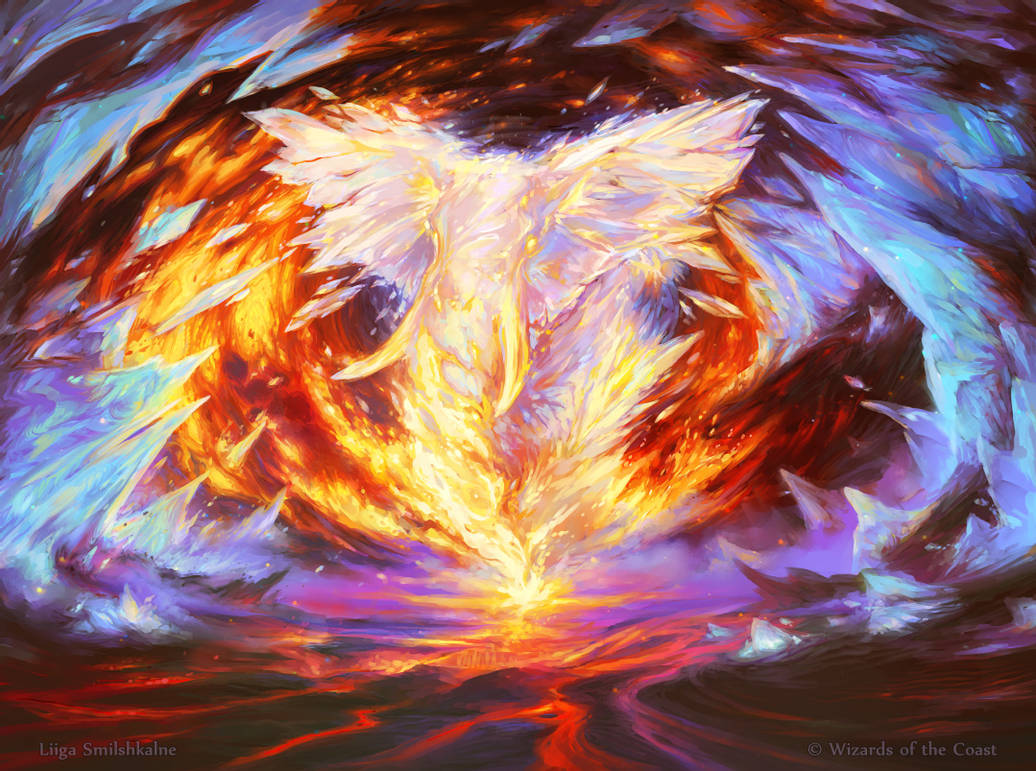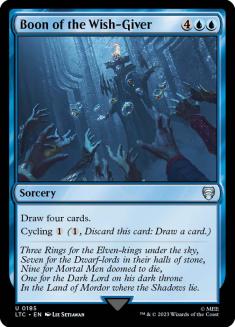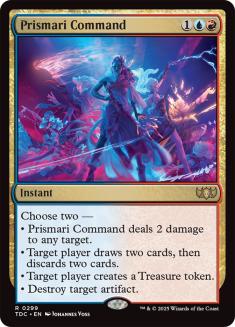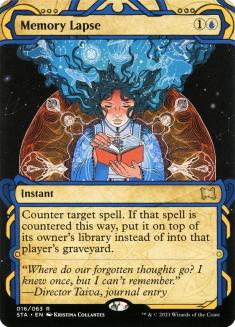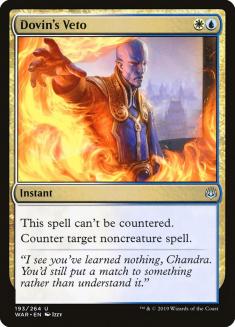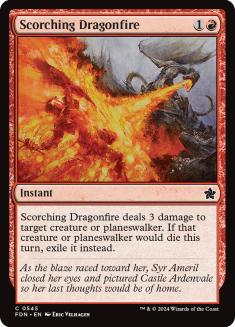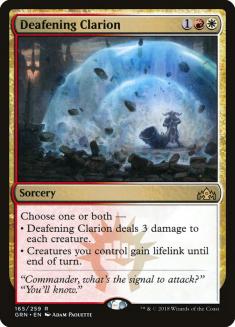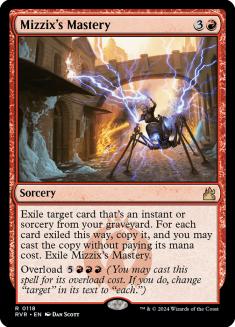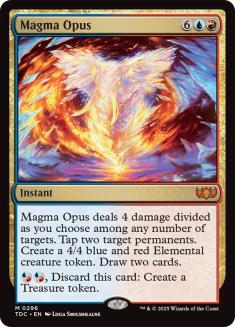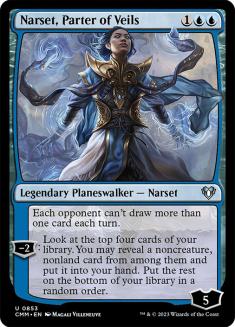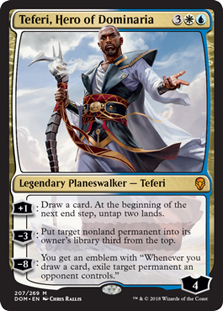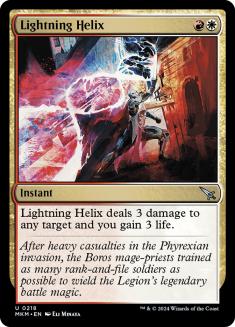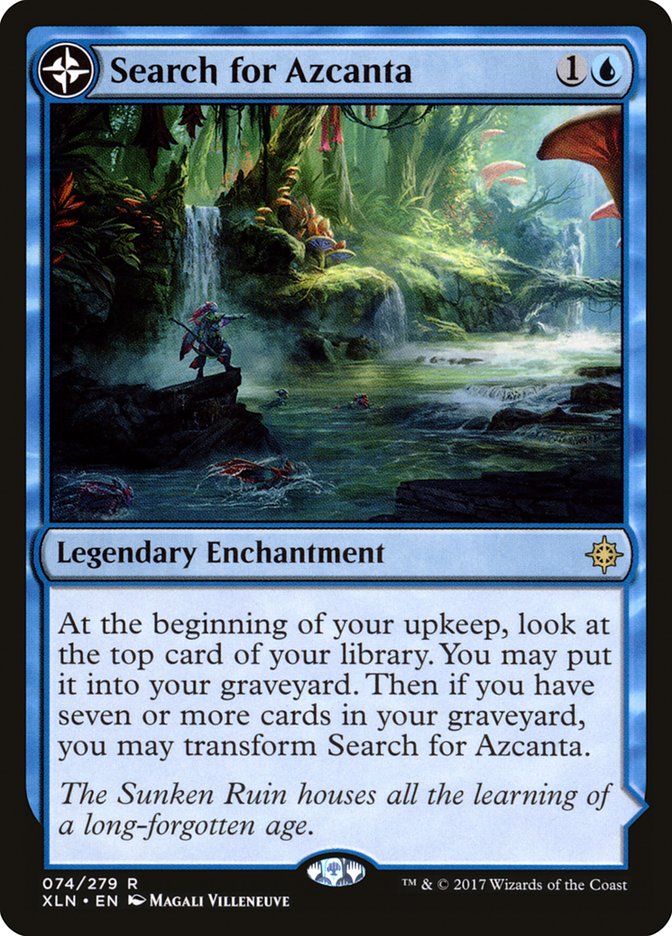I need to retcon a little bit about what I said last week.
I’ve largely concluded that trying to play Brainstorm in your control decks is a fool’s errand. I know – both a hot take and an admission of being wrong. That’s quite the sentence.
Experimenting and learning is one of the most fun aspects of Magic for me. Last week when posting decks, I ignored a critical aspect of Brainstorm: it plays very badly with expensive cards.
It’s difficult to cast it early unless you have one of your few “shuffle effects,” but you also can’t afford to miss land drops when you’re working towards five- and six-mana cards. This puts you in an awkward spot as you want to cut lands from your deck, but then Brainstorm doesn’t have enough impact when you can’t consistently use it to find spells and shuffle away enough lands. It’s all a complicated mess. The push-and-pull of the format just doesn’t really suit Brainstorm unless you are playing a strategy like Arclight Phoenix.
I still think Abundant Harvest is excellent and is a critical component of the low-to-the-ground blue and Dreadhorde Arcanist decks, but I’ve found more success this week bucking the status quo and getting a little more creative.
The deck that’s felt the strongest and that I’ve had the most success with is Jeskai Control.
My list still has the fundamental DNA of the lists that have been popping up since the release of Strixhaven. Torrential Gearhulk + Magma Opus is a great combo, but through trial and error I’ve solved many issues with previous lists. The main change is dropping Brainstorm and embracing the deck as more of a purist combo-control strategy where your combo is simple – and pardon me as I’ve tried to largely erase this from my vocabulary – make some mana and do something busted.
Creatures (4)
Planeswalkers (4)
Lands (27)
Spells (25)

To make a long story of slow progression short, I bucked against the notion of maxing Torrential Gearhulk in this deck at first, instead eschewing some number of copies for the full playset of Mizzix’s Mastery.
The appeal was pretty simple for me. If a control deck can have an incredibly powerful proactive draw, then you can heavily mitigate their weaknesses where they flood, can’t play resource-light games, or are suffering from drawing the wrong half of their deck in the matchup.
While casting Magma Opus on Turn 4 or even Turn 3 was excellent often, it suffered from the last issue. Main-phase Magma Opus is just extremely beatable unless you are a dedicated creature strategy.
My Brainstorms and the surrounding infrastructure to support them, notably Narset, Parter of Veils, were failing me. The former were too inconsistent. The latter were functionally dead draws against a third of the format or easily swept aside by prepared opponents.
Further, Mizzix’s Mastery was too often unreliable or simply low-impact. There is a time and place for a four-mana Lightning Helix, but that rate isn’t blowing the doors off anyone in a close contest.
Some exploration with dedicated Cycling strategies using Mizzix’s Mastery to “double up” on Zenith Flare ultimately gave me my “aha” moment. I just ported the technology into the stronger deck and started tweaking the numbers from there.
You rarely want to draw multiples of Mizzix’s Mastery but it does play an important role. Not only does it unlock that Magma Opus draw, but in matchups where it isn’t the strongest, Boon of the Wish-Giver is an extremely low-opportunity-cost way to make Mizzix’s Mastery excellent. The surge of resources is powerful regardless of matchup as long as you aren’t dying. The additional redundancy on your copies of Wrath of God or some extra lifegain through Lightning Helix is welcome over a wide spread of matchups.
As I tuned the deck I pulled back on some of the “combo” elements and instead just leaned into the ability to give myself more choice about which speed to approach games by adding more cards that can generate mana.
The card that’s gone up the most in my rankings since the release of Strixhaven it is Prismari Command.
I almost always make a Treasure with my Prismari Command. Paired with Magma Opus, you have eight ways to jump ahead of schedule. That’s pretty powerful when you’re casting Teferi, Hero of Dominaria and Torrential Gearhulk into an Ultimatum.
It doesn’t matter that you’ve “burned a card” when you’re immediately getting paid back by advancing your battlefield so dramatically. Turn 4 Teferi holding up a two-mana interactive spell can easily win games on the spot. Bant Control has essentially splashed Growth Spiral in the past to leverage this exact play pattern.
Prismari Command also fills several extra roles and it’s foolish for so many decks to have two or fewer copies. You aren’t vulnerable to Witch’s Oven or Grafdigger’s Cage with four maindeck Shatters, it’s a removal spell against aggression, and the filtering helps mitigate the amount of spot removal we’re playing to keep up with Dreadhorde Arcanist and Burning-Tree Emissary plus friends. Further, sometimes your sequences are off-balance. Pitching your Magma Opus while making a Treasure is exactly what you need to set up an on-time Torrential Gearhulk.
Speaking of the two-mana interaction, my spread is relatively straightforward. I like a lot of the various Growth Spiral Magma Opus decks available in the format, but they simply have no shot against Turn 1 Thoughtseize, Turn 2 Dreadhorde Arcanist.
Granted, nine ways to interact with Arcanist still isn’t a ton, but it’s the best we can realistically do. All of our cheap interaction between main and sideboard deals three damage because Dreadhorde Arcanist must die. Lightning Helix is the strongest, giving you tons of free additional game against Gruul and Burn, plus further ability to weasel your way out of bad situations, while Scorching Dragonfire is runner-up for its ability to stop Arclight Phoenix and shut down Claim on the Arcanist menace.
Boon Jeskai can leverage Memory Lapse incredibly well because it is sufficiently proactive. Torrential Gearhulk + Magma Opus is so potent at getting over the finish line that we really just need time, unlike hard control decks that must answer all of their opponents’ threats and bury them in card advantage. Memory Lapse stops everything and costs two mana, making it reliable and an excellent pairing with Teferi. In less frequent scenarios you can just win by chaining a couple of Memory Lapses against stalled opponents, sometimes getting Torrential Gearhulk in the mix. It is excellent in a deck like this that is capable of real pressure.
The final slot, Dovin’s Veto, is close. Censor has failed me too many times, and Veto helps against hard control decks, so it’s my pick for now.
Sideboarding
VS Gruul Aggro
Out:
In:
This matchup can range from incredibly simple to complicated. Largely, you just want to survive. Burning-Tree Emissary and the rare presence of Collected Company can make things trickier. Decklists typically eschew the latter, but you must be aware of it (and potentially Embercleave) when lining up your spells.
Scavenging Ooze can also ruin your day, so be wary when they are casting Company and you have Gearhulk.
Weirdly, I’ve come around to not killing Llanowar Elves on Turn 1 when given the option, especially when I have access to Memory Lapse. Their best draws bar none involve Burning-Tree Emissary nonsense, and stopping it can save you a ton of life. Otherwise just trade as much as possible, make sure you don’t get blindsided by the little burn they do have (particularly Ramunap Ruins), and close the game out with Gearhulk + Magma Opus.
VS Rakdos Arcanist
Out:
In:
This is another example, as is largely true for Historic as a whole, where the details of an opponent’s decklist can change how you’ll sideboard dramatically. If your opponent is packing Cling to Dust, I’d consider shaving your Mizzix’s Mastery as well, potentially going as far as including Shark Typhoon in case the games bog down considerably.
There is where you’re going to feel your reliance on the graveyard, as you can’t realistically sideboard Rest in Peace.
As I said in the deck discussion portion, an unanswered Dreadhorde Arcanist can run away with the game. Prismari Command is your weakest removal spell since it deals two damage, and as you’ll see, the more we can tighten up our deck after sideboard, the less we need the card for its filtering and speed, instead choosing to go toe-to-toe.
VS Orzhov Auras
Out:
In:
Disrupting their engine components is all that matters. I’m not entirely sold on Narset, but enough of the games in my experience are longer affairs where Auras needs to both deploy an engine piece and “go off” in the first turn it is cast. Narset aggressively stymies this plan. This is a scenario where we’re missing additional copies of Wrath of God after sideboard. If this or bigger green decks start to pick up in popularity, definitely make the swap with Clarion. You might even consider a fourth copy.
VS Archlight Phoenix
Out:
In:
The goal here is to get as lean as you can afford to. Narset is a real problem for Phoenix; remember to never tick it down until you can untap, and if you can tag a Phoenix or two into exile, it becomes incredibly difficult for them to kill you as long as you can contain Crackling Drake. Their threat spread might make you want to go back to Lightning Helix, particularly if they have Dreadhorde Arcanist. That said, most lists are getting relatively light on threats.
I don’t like Magma Opus a ton in this matchup as they are likely to bring in copies of Mystical Dispute, but in longer contests it can tag Crackling Drake and often end the game on the spot.
VS Control Mirrors
Out:
In:
You have a pretty hefty sideboard plan against any other dedicated blue decks. Similar plans apply to decks like Taking Turns (you’ll want Aether Gust against Nissa) or similar Growth Spiral strategies. Patience as always is the key to control mirrors, and it won’t be unrealistic for you to build up to eight mana and start firing off Magma Opus on your opponent’s end step as a test spell. That, combined with Dovin’s Veto, Shark Typhoon, and Torrential Gearhulk, means you have plenty of potent flash tools to compete with the best of them.
VS Five-Color Ultimatum
Out:
In:
Yes, it is exactly the same as a control deck, but the matchup will play differently. Just never take risks and tap out; the way these decks are constructed, they’re highly vulnerable to interaction. This is a good matchup if both players have average draws.
This isn’t the complete spread of matchups in Historic. The format is too vast and rapidly evolving, especially as more and more SCG Tour Online Satellite results roll in. Still, it should get you more than started for how to navigate the format with Jeskai Control.
As of this week, it’s my pick for the best deck in the format with its flexibility and raw power.

